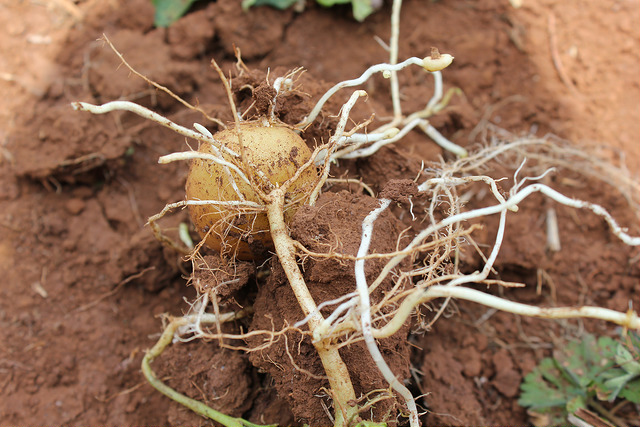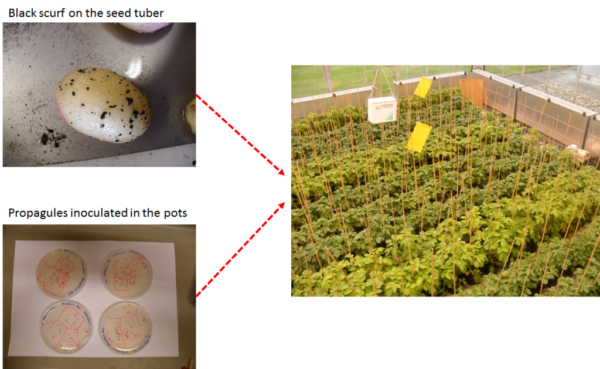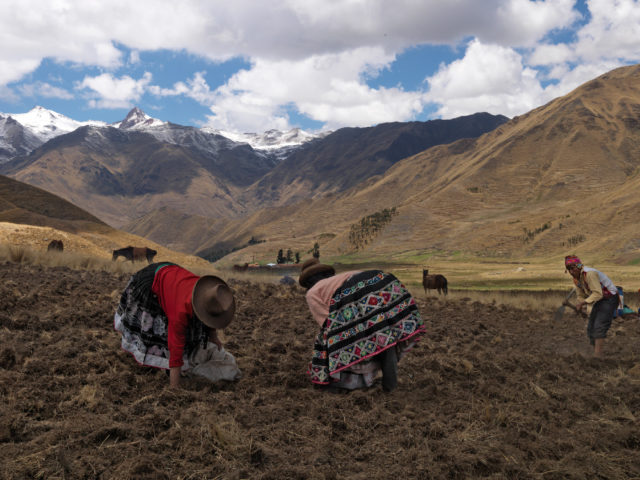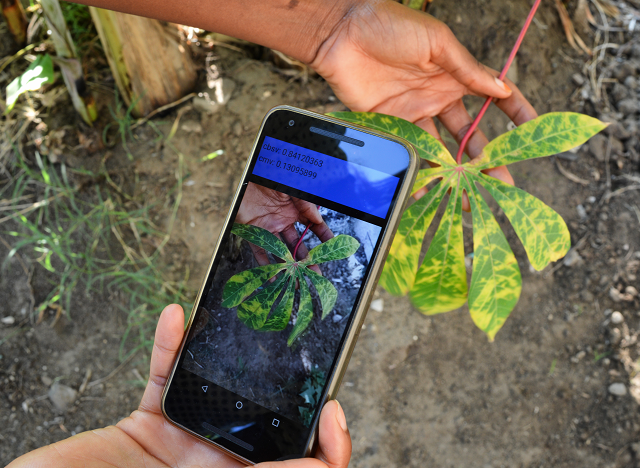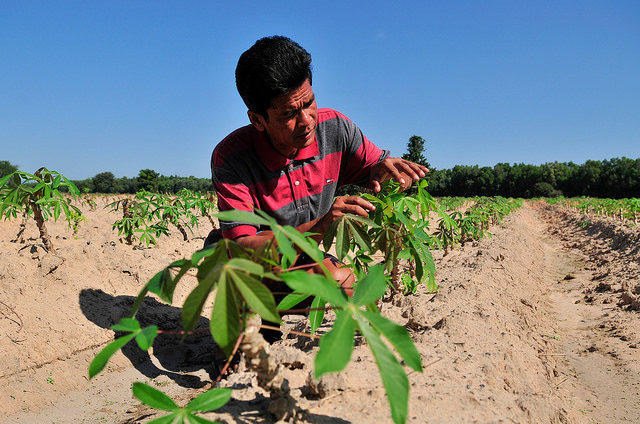The resilience of potato production systems in Andean countries heavily depends on seed quality. Under local conditions in Ecuador, the variation in seed quality has been estimated to account for 30% of variation in attainable potato yield. This is critical for the country’s estimated 85,000 potato farmers, of which around 75% are small-scale producers. Farmers’ seed quality is usually poor because of degeneration, which is the increase in incidence of pests or pathogens in the seed tuber leading to yield loss and a decline in seed quality over successive cycles of vegetative propagation.
One of the pathogens causing seed degeneration is Rhizoctonia solani which is disseminated by the seed tuber (black scurf) or the soil. Yield losses caused by R. solani in potato in Bolivia, Ecuador and Peru have been reported to be up to 20%, indicating the importance of the pathogen for the Andean region. Despite this, the influence that the sources of infection and the density of the pathogen have on potato seed degeneration and on fungal soil colonization has been poorly quantified and understood.
To understand the role of inoculum sources and inoculum densities on the potato seed degeneration caused by R. solani, researchers from the International Potato Center, the Centre for Crop System Analysis and the Laboratory of Phytopathology of Wageningen University set up a glasshouse experiment at Wageningen University with different levels of R. solani on the seed tuber and in the soil. To explore how these factors influence the extent to which the pathogen infects the surrounding soil, DNA was extracted from soil samples taken from the pots at 30, and 60 days after planting and one day before harvesting. Then, the absolute amount of DNA of R. solani was quantified using real-time PCR.
Assessing sources of infection and the density of the pathogen on potato plants
“Our results found that the disease delays the emergence of the potato plants and consequently causes problems in the management of the crop. This means that we need to be careful with the tubers that we are planting because these may affect the development of our crop,” explains MSc student Israel Navarrete from Wageningen University, whose research scholarship for the project was funded by the McKnight foundation.
“Additionally, our results show that the pathogen can disseminate aggressively on the tubers and in the soil and that IPMs need to take into account not only the health of the seed, but also the health of the soils. The results also found that we can monitor the disease either in the soil or in the tuber, making it possible to integrate this in Integrated Pest Management strategies,” he says.
Effects of R.solani on emergence and amount of R.solani DNA on tubers
The researchers concluded that both inoculum sources are relevant to reduced seed quality regardless of the inoculum density, and that soil colonization by R. solani is similar after 30 days after planting.
“These findings will eventually be translated into better pest management strategies in order to improve the quality of the seed produced by smallholder farmers, and improve the health of the Ecuadorian soils for the benefit of the same farmers. Monitoring strategies can be designed to understand the variation of the pathogen on Ecuadorian farms, and reduce the impact of the pathogen on farmer fields,” explains Israel.
Better management of critical pests and diseases is an essential step towards helping boost Ecuador’s potato production (9 ton per hectare), which continues to be much lower compared to its neighbours, Colombia (19 ton per hectare) and Peru (14 ton per hectare). This will bring much needed income and food security for the country’s small-scale producers.
This research was conducted as part of the ‘Seed degeneration of roots, tubers and bananas’ project funded by the CGIAR Research Program on Roots, Tubers and Bananas.
